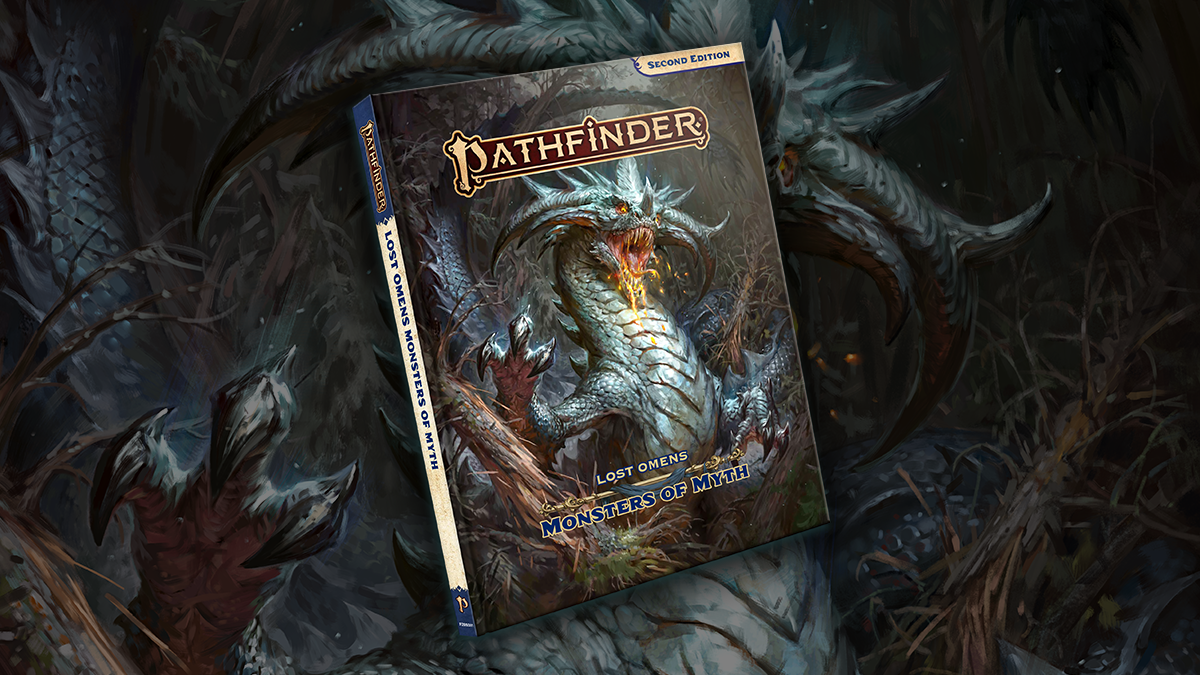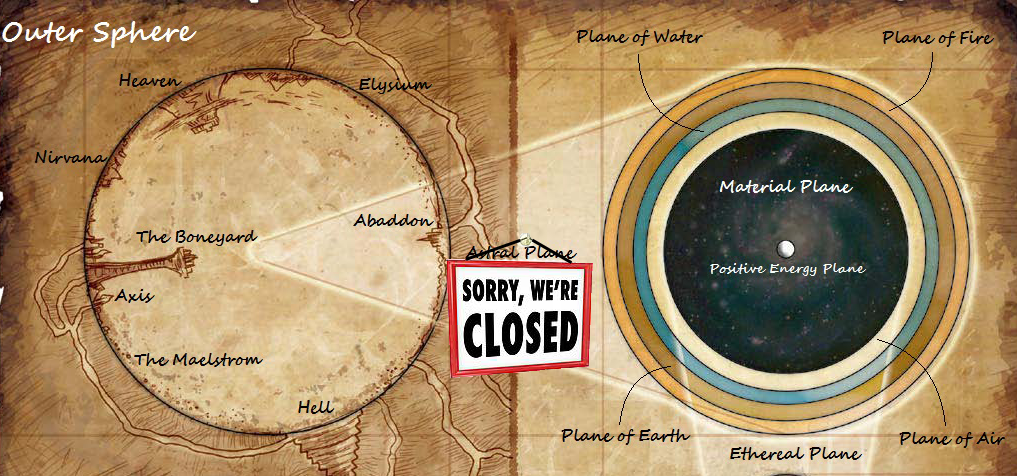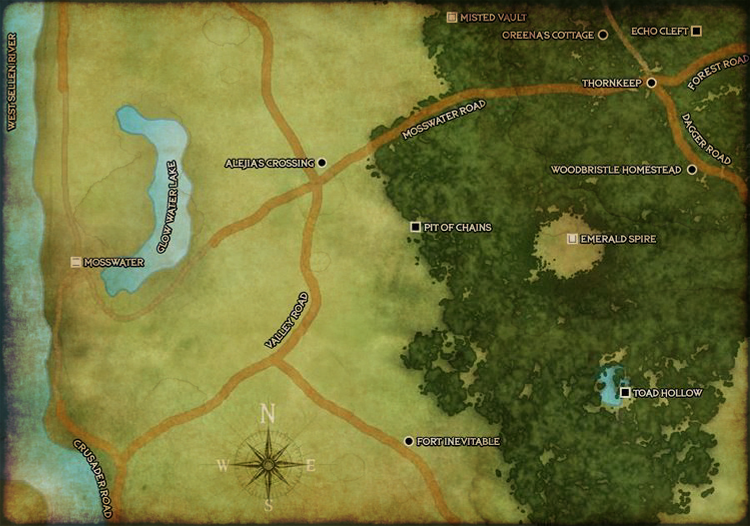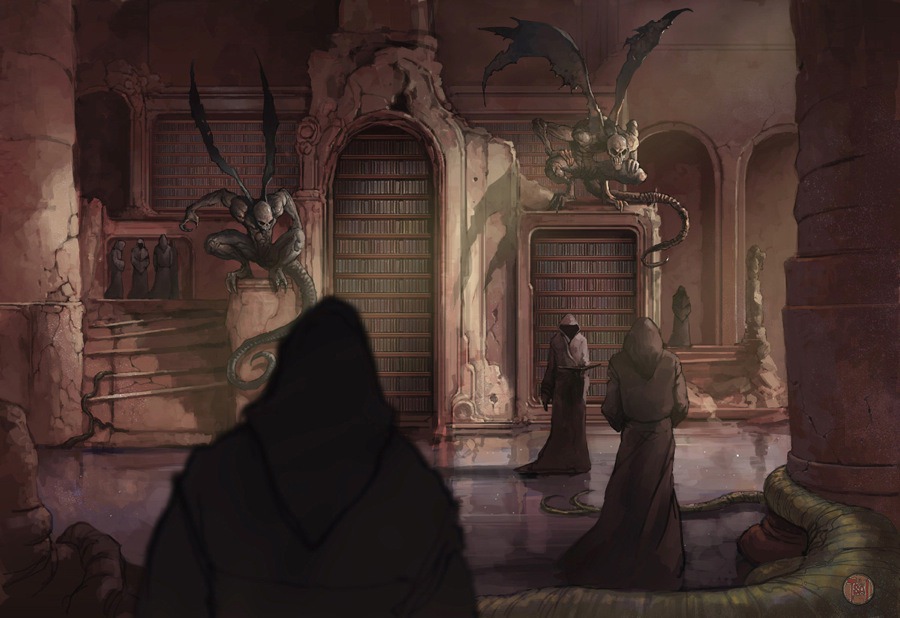As a fan of all things Golarion, I think Monsters of Myth is one of my favorite books for Pathfinder Second Edition so far. Ostensibly for GMs as part of the Lost Omens Campaign Setting, this book is an amazing marriage of Bestiary and the old Player’s Companion–style book of player-friendly lore. So many parts of this book could be provided to PCs as the results of a Knowledge check or as a lead-in to a series of adventures based around one of the creatures detailed in the book, or even as the player’s guide content of a full adventure path. You can get the low-down on the book in this episode of the KD podcast.
What I love about the book is the way it joins what could have been “just” a bestiary with stat blocks and a bit of background with story hooks and campaign seeds. Each entry has the feel that it was collected by adventurers over time and compiled by a bard or scholar, recording secret lore known only to a few. You could read this book as if it were a compilation of short fiction tales and it would hold up.
The Great White North
For example, let’s look at one of the creatures that is near and dear to my heart: the first entry, Ainamuuren, who may be the last saumen kar left on Golarion. “Big A” features prominently in a first edition PFS scenario I got to work on called Death on the Ice, where he appears as a potentially-benevolent source of information. When writing that, I didn’t know much about the saumen kar beyond what made it into print: they’re big nomads of the Crown of the World, keepers of arcane knowledge and covered in runic tattoos. They’re not yeti, although they are often confused with them by those who see them from a distance and jump to conclusions. Big A had a specific role in that scenario (which I won’t spoil here), so we didn’t see too much more than that, but I always wondered about the saumen kar and how they fit in to Golarion.
Now we know. In Monsters of Myth, Big A gets a six-page spread that includes first-person history, adventure hooks, a terrible curse, and an archetype for PCs. The history details an ancient-but-unnamed enemy that currently lies dormant due to the efforts of the saumen kar, but who sounds to be at the same scale as Tar-Baphon, the Whispering Tyrant that has ravaged Avistan three times so far and shows no sign of stopping. The history, the writing style, even the artwork all have a markedly different “feel” than the more typical lore written from a Taldane colonial perspective. Ainamuuren’s tale is a tale of the north, and the people of the north are not just the same people we always see but in winter clothes. Even moreso than the content, this stylistic difference really helps to make the character and its stories feel true.
Myths New and Old
Lest you think that it’s just about mysterious not-yeti keepers of arcane lore, Monsters of Myth has entries for all environments and all levels of PCs to face. Desert’s Howl, Spring-Heeled Jack, and even the Sandpoint Devil have entires here – 20 creatures, with ahlf of them brand-new, with a CR range from 3 to 24. Perhaps the best part is, the list of creatures you can use is not strictly based on the PC’s level. There are ways to incorporate many of these creatures into your adventures starting right at first level. Obviously, a direct confrontation with Fafnheir, the CR 24 Father of Linnorms, would be a bad idea for your brand-new level 1 PCs. (No. Bad. Don’t do it. Although… <scribbles notes for next article>) However, each creature’s entry has suggestions on how to incorporate the myth of the monster into your PCs’ lives from levels 1 through 20. In Fafnheir’s case, it’s not just hearing about the creature – there are suggestions for how to have low-level PCs actually adventure in and around Fafnheir’s mythical lair, slowly building up experience, allies, and knowledge so they can eventually face the great beast (or just avoiding accidentally waking him up). Add a few side quests to recover items of power or recruit powerful allies, and Fafnheir’s entry reads like the outline of a full-on adventure path.
If you’re a GM who is ready to move away from fully pre-prepared scenarios, but you’d like to stick to “canon” in terms of storyline, this book is for you. You can design a single adventure or a series based on the lore, and yet still get to design the details of the adventures and creatures for your PCs. This is the type of book that “More Lore” is written for – enough storyline and official canon to make it fit into Golarion, but enough freedom for GMs to create world-shaking campaigns for their players or for PCs to incorporate into their backstory.
Making Monsters of Myth
This approach can be taken for existing creatures as well. Let’s take a creature like the choker from Pathfinder Second Edition Bestiary 2. There’s only about 175 words of lore on these creatures, but that’s enough to suggest a couple of adventure ideas. Two lines jump out immediately:
“Chokers that encounter humanoids exhibit intense curiosity about their culture, society, and the products of art and industry.” Curiosity can lead to all sorts of trouble where the initial source isn’t clear. Perhaps there’s a series of art thefts occurring that the PCs have to track down. Maybe strange objects are being taken from the scenes of some particular grisly murders assumed to be the work of a serial killer. Either of these could lead to a choker or six as the culprit.
“Chokers sometimes gather in settlements, usually sticking to slums or abandoned structures.” A settlement of chokers could be terrifying, especially if it were designed for the creatures’ ability to squeeze through narrow areas and climb. And there’s that special word: “usually”. Maybe a group of chokers has just taken over the town hall through a previously-blocked passage to caverns below, and claimed it as their new settlement. This could result in anything from a hostage situation where PCs must negotiate the release of the town council, to an assault mission through familiar surroundings turned hostile.
Of course, you can also ignore all of that and do whatever you want, but that surrenders one of the key benefits of Golarion: its rich lore. You can find this information in the books or online resources, and don’t have to remember what scrap of paper you made notes on. Players will have the same starting assumptions you do, and that helps make your game feel more realistic (inasmuch as a game with dragons and magic can).
Next time: we’ll talk about why I think GMs should let players read* the adventure before they play it. More lore!
- disclaimer: not all of it… you’ll see what I mean.
Gatekeeping Golarion Lore






